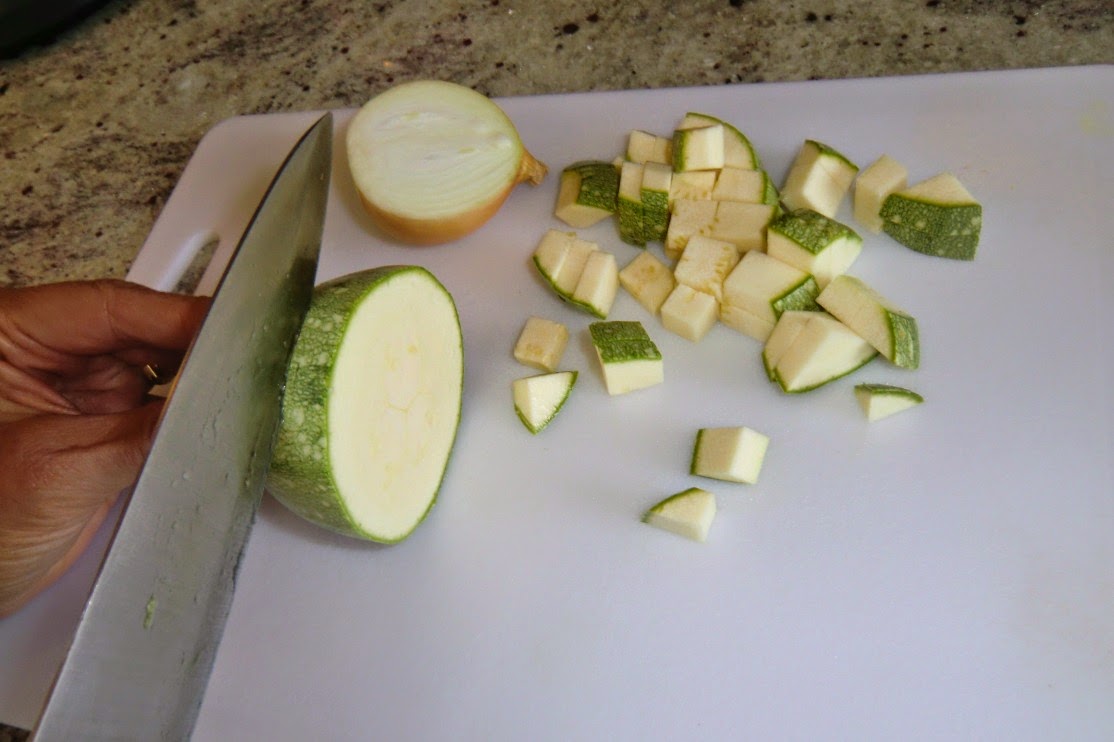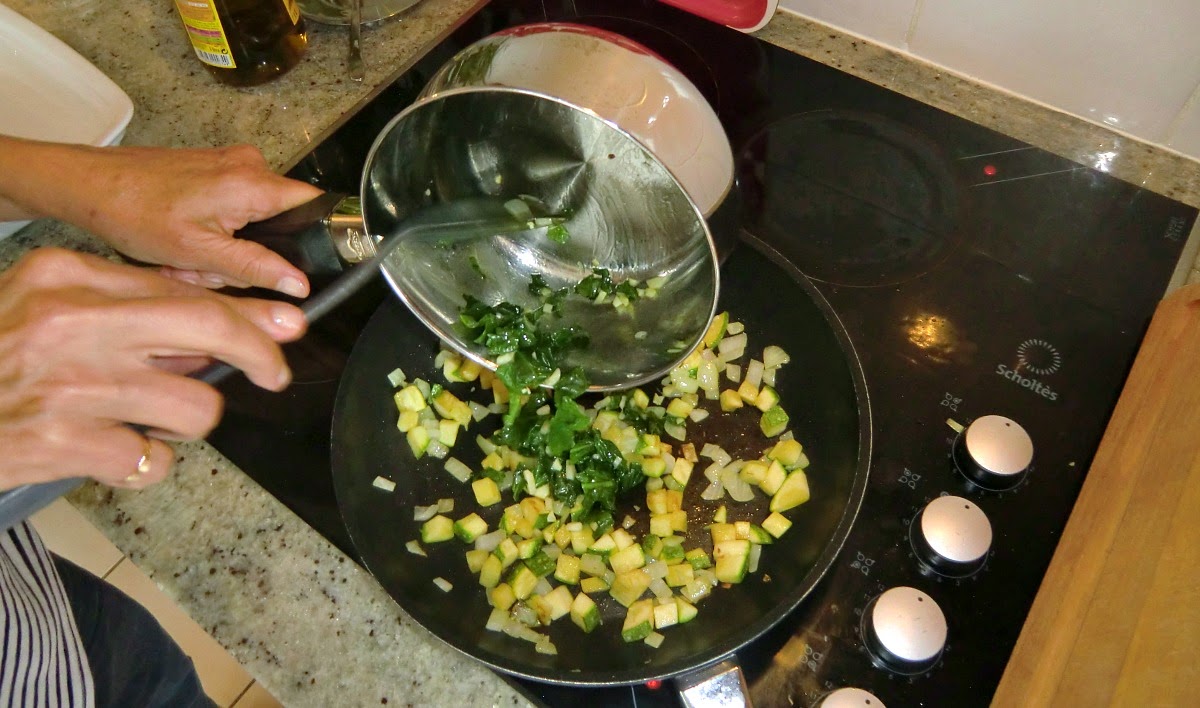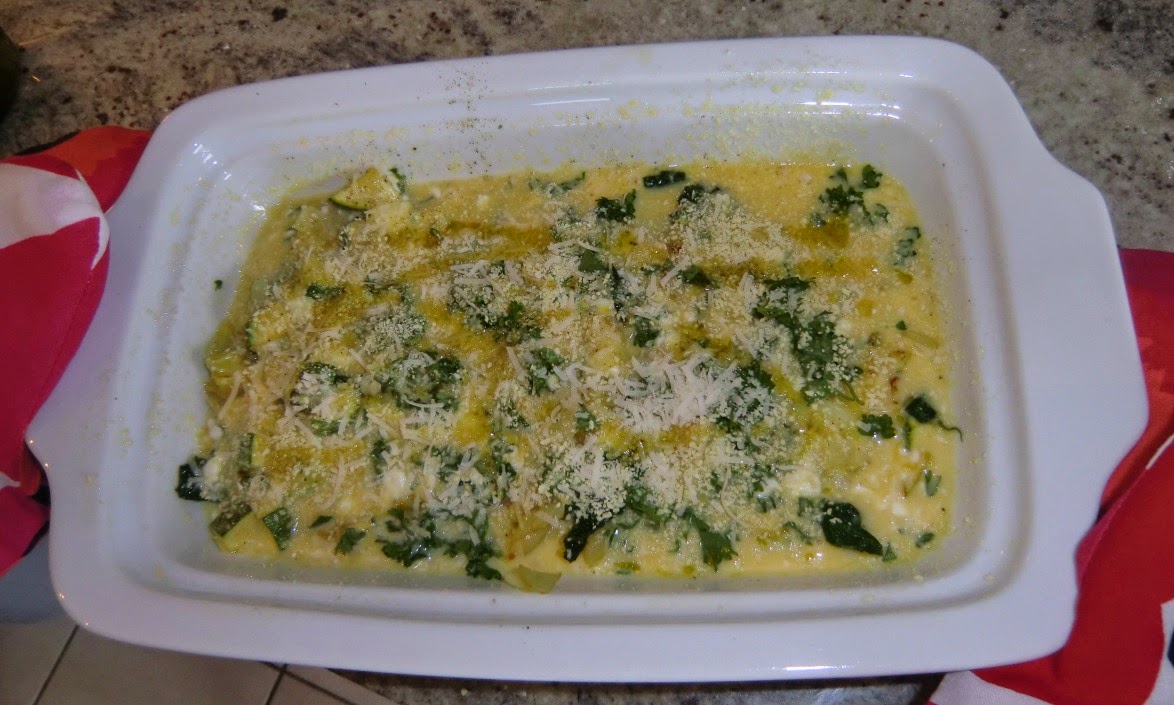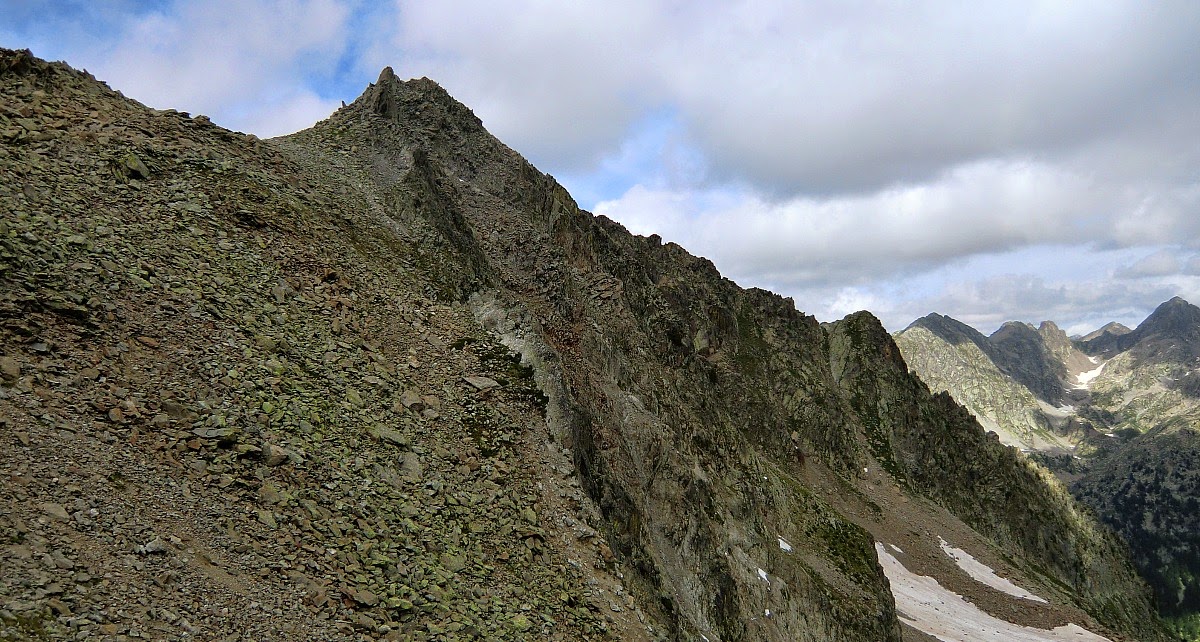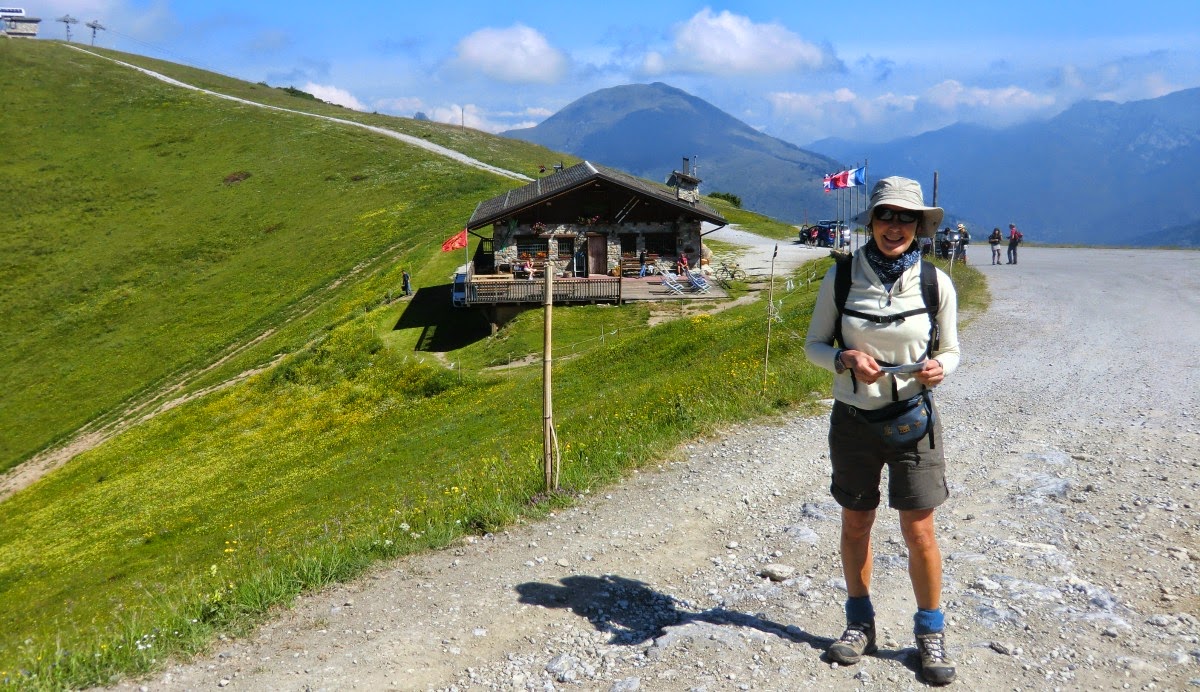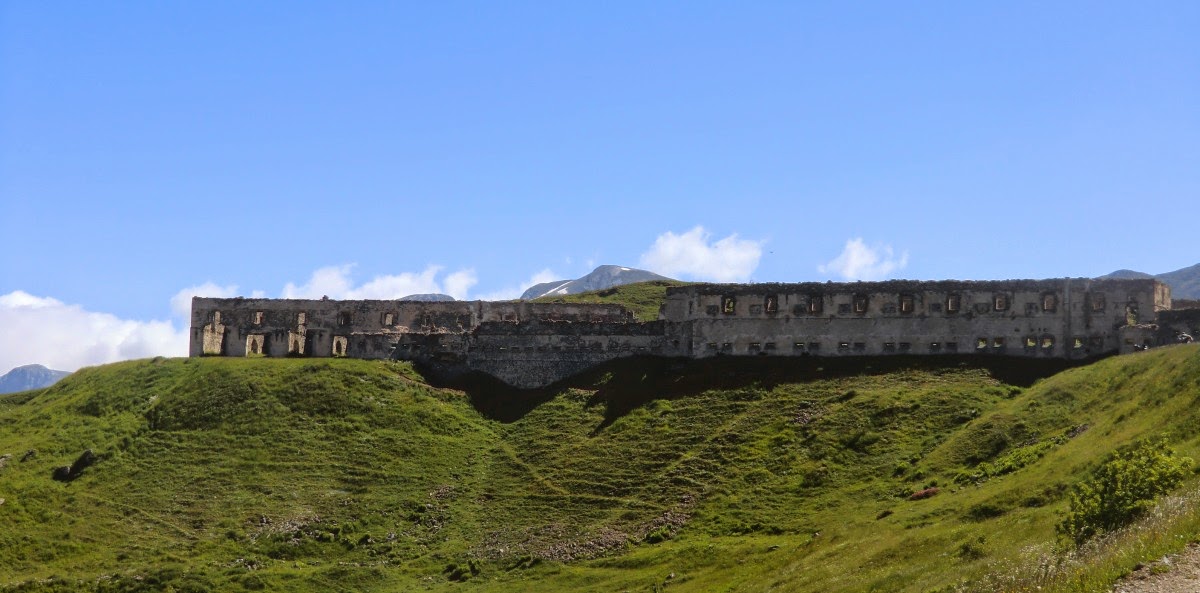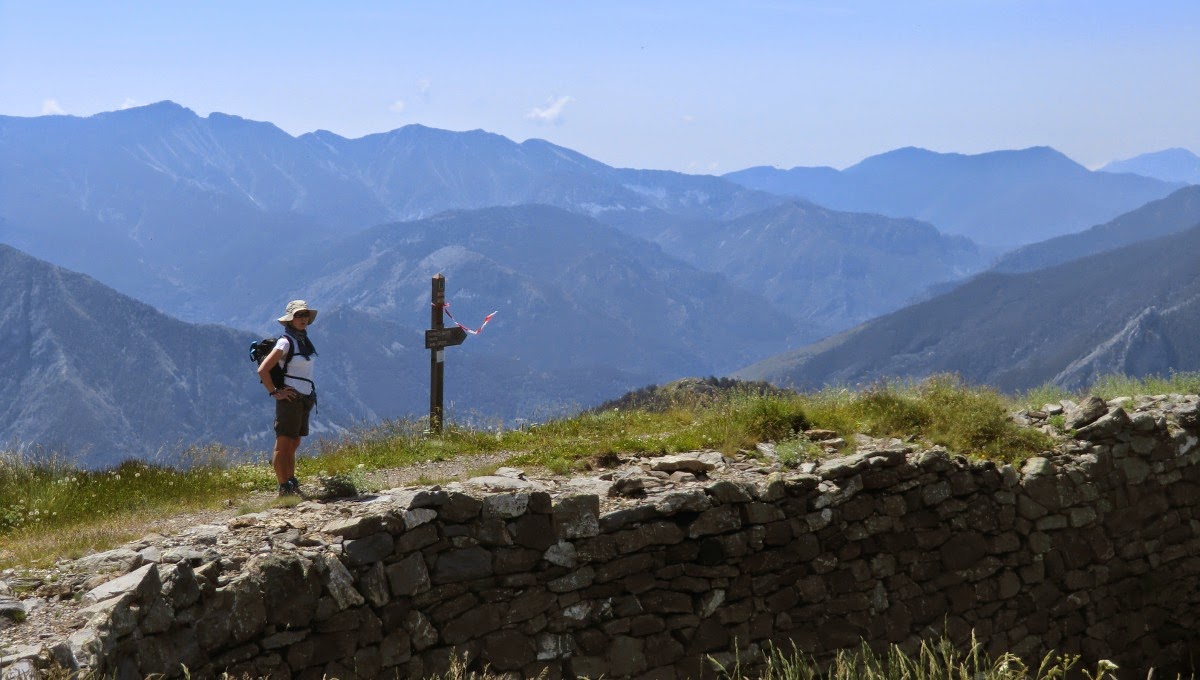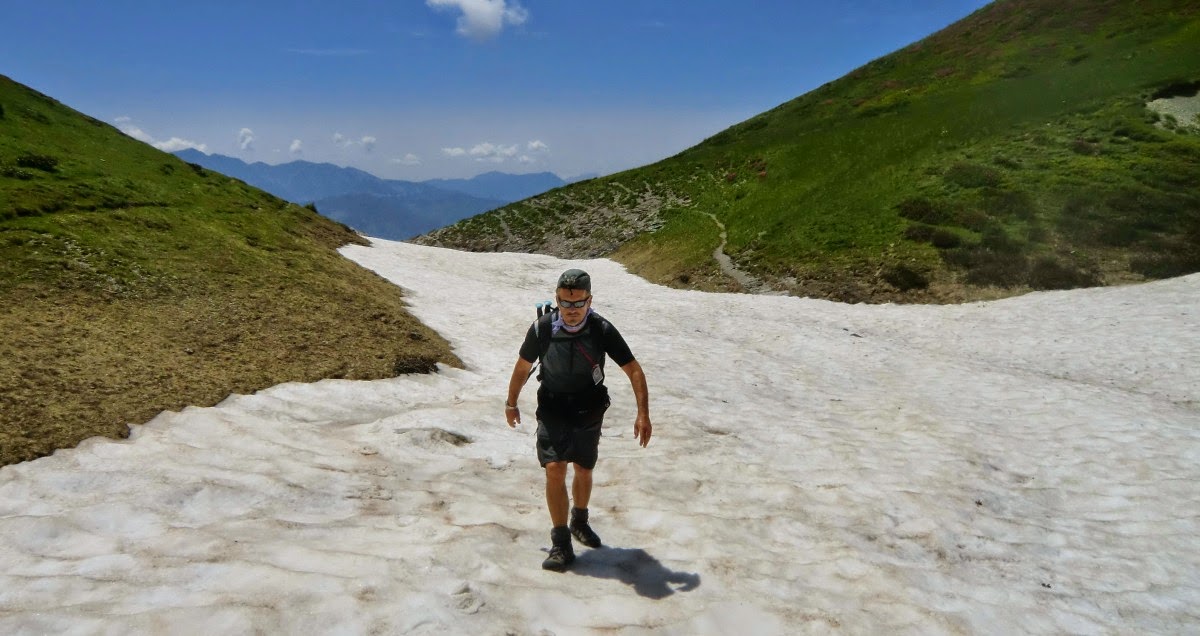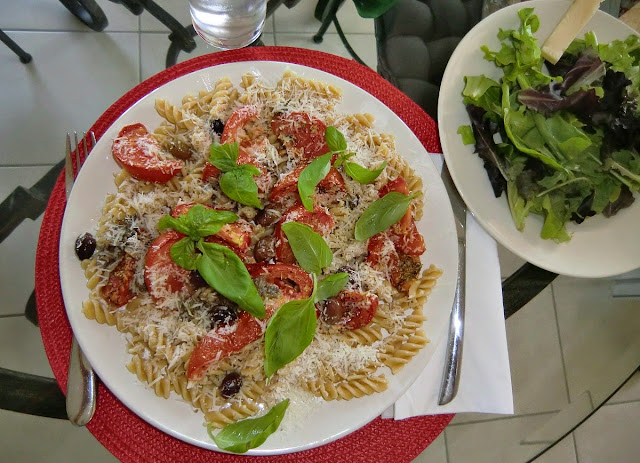Courgette gratin
Tian, a gratin, is a traditional Provençal way to prepare vegetables. Tian is also the name of the ovenproof dish in which the gratin is prepared.
I have read a charming story about the traditional baking time of tian: it corresponds to the length of time it took to bake bread in a communal oven. In the old times, people usually did not have own ovens at home in small villages in Provence. Various tians, tarts, stews and so on were prepared at home and then taken to public ovens or commercial bakeries to be cooked. For practical reasons, the cooking times had to roughly correspond to the time it took to bake the bread.
I have seen various tian recipes. They usually consist of vegetables, eggs, freshly grated parmesan or gruyere, milk and/or crème fraîche and/or rice. The choice of vegetables varies according to the season and availability.
The best courgette for this gratin is the round and firm courgette de Nice. It does not release water during cooking or turn to mash, and it does not have seeds!
Courgette gratin, tian de courgettes
2 servings
1-2 round courgettes de Nice
1 very large or 3-4 small leaves of chard, blette
½ medium onion
1 clove garlic
About 3 tbsp olive oil
2 sprigs of parsley
Freshly ground black pepper
2 eggs
100 ml milk
1 tbsp crème fraîche, 15 % fat
About 3-4 tbsp freshly grated parmesan
3 tbsp breadcrumbs
Preheat oven to 180 ⁰C.
Slice and dice the courgettes and the half of onion into small cubes, about 1 x 1 cm.
Warm 1 tbsp olive oil in a frying pan over a medium heat, and cook the courgette and onions for about 5- 7 minutes until soft and slightly golden brown. Set aside.
Wash and dry the chard leaves and remove the stems. Cut the leaves into strips. Over a medium heat, warm 1 tsp olive oil in a casserole. Peel and mince the clove of garlic, add to the casserole. Add the chard strips, and cook for a few minutes until wilted. Add the wilted chard to the frying pan and mix with courgette and onion cubes.
Mince the parsley.
Oil a small- medium gratin dish with 1 tbsp olive oil. Coat the dish with 1 tbsp breadcrumbs.
Cover the bottom of the gratin dish with a thin layer of courgette- onion- chard mixture. Season with black pepper, scatter a little parsley over the vegetables and sprinkle with 1 tbsp parmesan. Repeat the process until all the vegetables have been used, there will be 2- 4 layers depending how much vegetables you are using.
Beat the eggs with milk and crème fraîche. Then pour the mixture evenly on top of the vegetable layers. Sprinkle with 2 tbsp bread crumbs and 2 tsp olive oil.
Bake the gratin for 20- (25) minutes in 180 ⁰C.
Tip: With my French breadcrumbs, Tipiak Chapelure Dorée, it is very easy to get a nice golden brown colour on the crust of the gratin. This because the breadcrumbs have been added a dash of turmeric and paprika powder!




